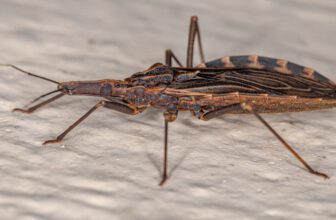While the possibility of life beyond Earth has long captivated the public, there are already tiny organisms on our own planet that are as alien to us as anything we’ve imagined.
These microbes are found in places once thought inhospitable to life, such as inside volcanoes, underneath the Earth’s crust in the deep sea, or in the Arctic permafrost. Not only are they surviving in these harsh environments, they’re doing so in ways that challenge basic principles of biology scientists thought were firmly established.
Karen Lloyd, a microbial biogeochemist at the University of Southern California, has been studying these subsurface organisms for much of her life. In her new book, Intraterrestrials: Discovering the Strangest Life on Earth, she takes readers on a guided tour of her own work and that of others, exploring what makes these microbes tick.
Gizmodo spoke to Lloyd about the discoveries scientists like her have made to date, the enduring mysteries about these earthly aliens, and why trying to understand them is so important. The following conversation may have been lightly edited for grammar and clarity.
Ed Cara, Gizmodo: What led you down this research path in the first place?
Karen Lloyd: I was really into chemistry as an undergraduate, and just the sort of mysteriousness of chemistry is honestly where I got my start. But then I was headed to chemistry grad school and it just felt too narrow. I just needed—I knew there was a way to do this science out in nature somewhere. And the way to do that was oceanography because that’s a place, not a discipline. I chose oceanography so that I wouldn’t have to choose between biology, physics, chemistry, and geology. I have to do them all.
Then just by happenstance, there was a lab that was looking at these microbes that were isolated from the deep sea. And I didn’t know going into it that there was this world of deep life. Obviously, no one knows it until you’re told. But when I found out it was there, I was like, ‘Okay, this is a place where I can use all these tools, these basic fundamental tools, to find out new discoveries about biology.’ And from there, I was hooked.
Gizmodo: What makes these life forms stranger than the life we’re used to seeing and studying up top?
Lloyd: One of the biggest things that immediately jumps out at you is that these things are on deep branches on the tree of life. So we might think that a slug is on a very different branch of the tree of life from like a kitty cat. But we’re talking about the slug and the kitty cat collapsing into the same branch compared to all these new types of microbes. I mean there are things that we never could have guessed—that life was as varied on Earth as we now know that it is. They’re just so different evolutionarily from everything that we see with our eyes.
Gizmodo: How are they reshaping some of the rules that we thought we had worked out about life?
Lloyd: We’ve always known that there’s such a thing as life without oxygen. There are a lot of places that are free of oxygen, like life inside our guts. That’s not new. But the idea that you can have an entire ecosystem that never needs oxygen and never needs the influence of plant matter, for instance; that can basically just exist solely on chemical reactions coming from inside the Earth—that’s new. That’s what we’re learning with these guys.
Gizmodo: It feels like this field has only barely begun. What are some of the biggest questions left to solve about their biology?
Lloyd: The biggest questions left are still very basic fundamental questions.
I mean, a lot of what we know is inferred from these highly specialized techniques that we have to use to get at them. You know, it’s not real. You can’t just walk up to them like you can a tree and be like, ‘Okay, that’s got roots. I know what it’s doing.’
So we’re still asking questions like, who all is there? And what are they doing? What are they eating? What role do they play on Earth? How do they interact with metals? What role do they play in the development of Earth’s evolution over time?
Gizmodo: This is your life’s work obviously. But what’s the latest project or research that you’re spearheading right now?
Lloyd: Yeah, I just got back from New Zealand. They have an amazing subduction zone. That’s where two tectonic plates are overlapping each other. And that process creates volcanoes, but it also creates this sort of like alchemic mixture that enables these subsurface communities to take hold. So we drove all over New Zealand, sampled a lot of land and worked with local folks. It’s just really fun to do this work, just on a human level as well.
Gizmodo: What would you like our readers to most take away from reading your book?
Lloyd: I hope that people feel a sense of hope and possibility. One can imagine that you could get stuck thinking that all science is known or that the questions are small because we’ve tackled all the big ones. That there’s nothing left to explore. We know where all the continents are. We’ve pretty much got a handle on how many planetary bodies we have in the solar system. But that’s just the beginning.
There’s a whole world underneath our feet, for example. Not that there aren’t mysteries in those other places too, but we are just tapping into this stuff. So I hope that people leave with a sense of hope and possibility at all the amazing things we have left to learn about life here.
Intraterrestrials: Discovering the Strangest Life on Earth is set to be released on May 13 by Princeton University Press.
Trending Products

Sceptre Curved 24.5-inch Gaming Monitor as mu...

SAMSUNG 34″ ViewFinity S50GC Collection...

Wi-fi Keyboard and Mouse Combo – Rii Co...

Logitech Media Combo MK200 Full-Measurement K...











